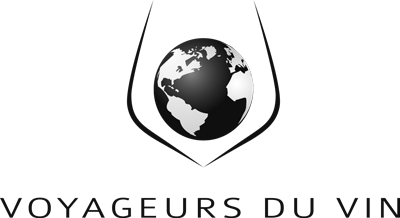Region and Vineyards
Dut'Un 2021 comes from the Friuli Isonzo Rive Alte denomination in Friuli Venezia Giulia, near the Slovenian border. The vineyards lie on the Isonzo River's alluvial plain, where centuries of flooding have deposited terraces of gravel and sand interlayered with clay. In the Vie di Romans and Vieris parcels, the soils are described as gravel-pebbly, with sand-silt of a reddish hue rich in iron and aluminium oxides, offering excellent drainage and naturally restricted vigour.
The climate here reflects a dialogue between the cool currents of the Bora wind from the Alps and warm, humid breezes from the Adriatic Sea. This sub-Mediterranean influence gives long, sunny days but marked diurnal shifts, allowing grapes to achieve full phenolic ripeness while preserving acidity. Friuli Isonzo is renowned for expressive, structured whites; in the Rive Alte subzone, slightly higher, stonier terraces concentrate flavours even further, yielding dense yet finely balanced wines such as Dut'Un.
Winemaking
Dut'Un 2021 is categorised as a white, dry wine and is a perfectly even blend of 50% Chardonnay and 50% Sauvignon Blanc from the Vie di Romans and Vieris vineyards. The vines average 31 years of age, planted at 6,000-6,500 vines per hectare on shallow to medium-deep, gravelly soils. Yields are kept low at around 5,660 kg/ha - under 1 kg of fruit per vine - to intensify concentration. Harvest took place between 18 and 25 September 2021.
After de-stemming and crushing, the must undergoes cold maceration at about 8 °C, followed by cold settling. Fermentation occurs in stainless steel at 16-19 °C with selected yeasts over roughly 20 days. Malolactic fermentation is not carried out, preserving tension and freshness. The wine then spends nine months on the lees in steel, gaining texture and complexity, with natural, non-agent clarification. Bottled on 27 July 2022, it rests a further 19 months in bottle before release. The 2021 reaches a formidable 15.26% alcohol, total acidity of 6.23 g/L and pH 3.18, with an estimated peak around 10 years and a cellar life of over two decades.
Tasting Notes
- Color: Bright, intense straw to light gold, with a viscous rim reflecting its concentration and elevated alcohol, yet with crystalline brilliance typical of stainless-steel ageing.
- Aroma: Highly expressive nose of ripe pineapple, passion fruit and white peach, layered with tangerine peel, elderflower, camomile and wild herbs. Subtle notes of almond, anise, flint and wet stone add complexity and a distinctly mineral edge.
- Palate: Full-bodied, intensely juicy and pulpy, combining rich orchard and tropical fruit with a firm line of citrus—lime, lemon zest and grapefruit. The palate is enveloping yet finely chiselled, marked by vibrant acidity, pronounced salinity and a long, persistent finish where citrus oils, stone fruits, herbs and a gentle almond note linger. Despite its power and 15% alcohol, the structure remains poised, promising further integration with cellaring.
Did you know?
The estate name Vie di Romans translates as "Road of the Romans", recalling the ancient Roman road that once linked Aquileia and Cividale and passed through Mariano del Friuli, where the winery now stands. In the late 20th century, winemaker Gianfranco Gallo radically reoriented the property, focusing on low yields, meticulous parcel selection and extended maturation. Since 1990 the whites have been deliberately released later than most peers, giving wines such as Dut'Un time to harmonise in bottle and better express their terroir—one reason these cuvées are so sought after by collectors and gastronomy-focused restaurants.
Wine Pairing Ideas
- Lobster risotto: The wine's richness and creamy lees texture resonate with the silkiness of risotto, while its acidity and saline edge lift the sweetness of lobster and keep the dish from feeling heavy.
- Seared scallops with lemon butter and herbs: Dut'Un's citrus, stone fruit and floral notes echo the lemon and fresh herbs, and its concentration stands up to the caramelised crust of the scallops and butter sauce.
- Roast guinea fowl with fennel and orange: The wine's weight and alcohol complement roast poultry and slightly fatty skin, while its aromatic intensity and bitter-citrus nuance pair beautifully with fennel and orange accents.
- Mature Comté or aged Gruyère: The nutty, savoury complexity of these cheeses finds a natural partner in the wine's almond, mineral and dried-citrus notes, with its powerful structure cleansing the palate between bites.
